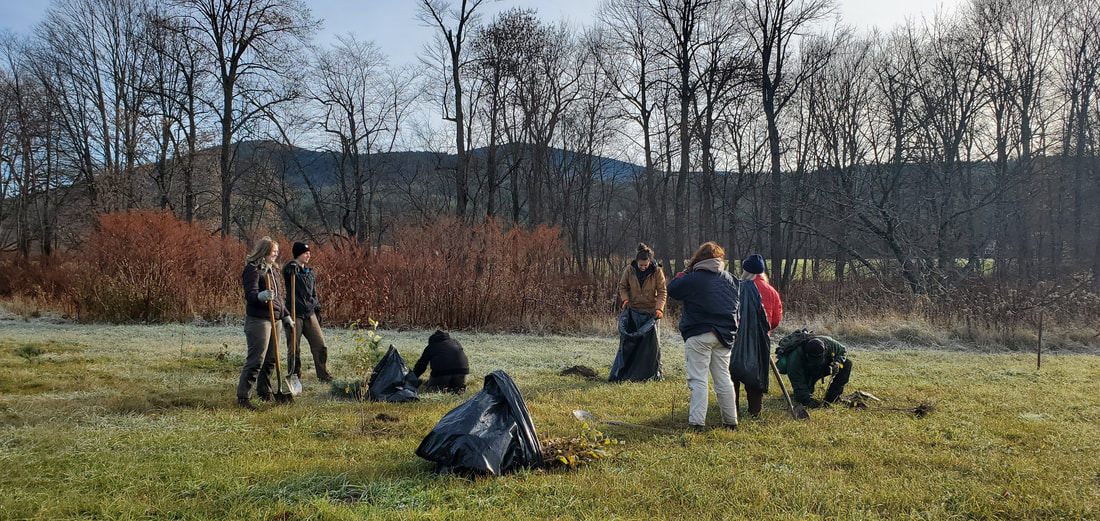|
This October we teamed up with the Waitsfield Conservation Commission and the Vermont Youth Conservation Corps to plant nearly six hundred native trees and shrubs in support of a healthy river and watershed. Four hundred and ninety plants were placed at a new riparian buffer restoration site in Waitsfield, along the Mad River. Another one hundred were part of an ongoing floodplain restoration at the Austin Parcel, along the confluence of the Mad River and Mill Brook. As these plants mature, both of these sites will serve as habitat for wildlife in and along the river and its tributaries.
In the case of the new project in Waitsfield, we are also combatting some pretty serious erosion along the bank of the river. Some amount of erosion is expected and good for the river as the sediment brings nutrients into the water. But when the erosion gets this intense, the water can become murky and critical streambed habitat can be disrupted. The planted trees will eventually have deep roots that help hold the soil together. The plants also help slow down water running across the nearby field, reducing its energy and erosive force. Rick & Laura Beaudoin, the owners of the property where the new restoration site in Waitsfield is located, have several reasons to plant trees. “We wanted to stabilize the soil on the river’s edge. Since Irene, we’ve seen quite a few large trees get undercut and fall into the river,” says Beaudoin. “We also want to restore the natural beauty of a wooded riverbank and, as those trees mature, we want them to provide shade to cool the water and keep our local trout healthy.” The project was funded through Vermont Department of Environmental Conservation Woody Buffer Block Grant funds. Landowners and managers interested in planting native trees and shrubs on their property are encouraged to reach out to Friends of the Mad River and [email protected]. Comments are closed.
|
Friendsof the Mad River Archives
July 2024
Categories |
Proudly powered by Weebly


 RSS Feed
RSS Feed